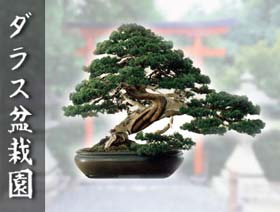|
A
creeping Wisteria covering a wall of the house or in the
garden offers a priceless show during blossom time; in a bonsai
specimen the sweet smelling blooming bunches offer the same
visual impact. Its bunches have small light blue, lilac or white
single flowers, similar to pea flowers, which open in late
spring over the tender green foliage background. The most common
bonsai species are W. floribunda, Japanese Wisteria,
and W. sinensis, Chinese Wisteria. The latter has
shorter and sweeter smelling bunches then the former and it is
stronger too.
|
|
|
|
|
.gif) |
|
|
|
|
|
|
|
Complete
sunlight. Shelter it from temperatures below -5
C.
|
|
|
|
|
|
|
|
Everyday
during the vegetative season. In the coldest
months place the pot in a low tray full of
water, so that the roots can receive the right
amount of humidity through the drain holes.
Water it less frequently in winter, but do not
let the soil get dry.
|
|
|
|
|
|
|
|
After
the blossom time, once a week, until mid-summer;
fertilize again during the three autumn months.
|
|
|
|
|
|
|
|
Every
three years, just after the blossom, using base
mould.
|
|
|
|
|
|
|
|
Wisteria
needs several pruning operations during the
year. The first one in spring, immediately after
the end of blossom time; do it again at the
beginning of summer, by mid-summer and in
autumn, shortening the new shoots to 2-3 couples
of nodes.
|
|
|
|
|
|
|
|
By
wood cuttings at the end of winter or at the
beginning of spring. By layers in summer. By
grafts at the beginning of spring. Propagation
by seeds is easy but it is less effective,
because the plants born by seeds take a lot of
years to come to blossom.
|
|
|
|

Informal
Upright, Slanting, Prostrate, Cascade, Root over Rock.
Suitable for all sizes from mean to giant.
|
|
|





